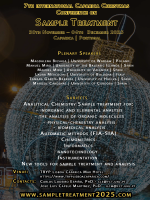Large-scale 2-D DIGE studies - guidelines to overcome pitfalls and challenges along the experimental procedure
DOI: 10.5584/jiomics.v1i1.50
Abstract
In large 2-D DIGE proteomic studies with a large number of samples, it is essential to design the experimental setup to detect statistically significant protein changes under consideration of experimental variances. Here we present some guidelines and general remarks on how to extract protein expression data by following protein spots on their way from first spot synchronization, detection, quantification and statistical analysis until excision and identification. Furthermore, common difficulties and potential pitfalls are discussed which might not be obvious to novices and even more experienced users of DIGE technology.
Downloads
Published
Issue
Section
License
Copyright (c) 2011 Creative Common Licenses

This work is licensed under a Creative Commons Attribution 3.0 Unported License.









